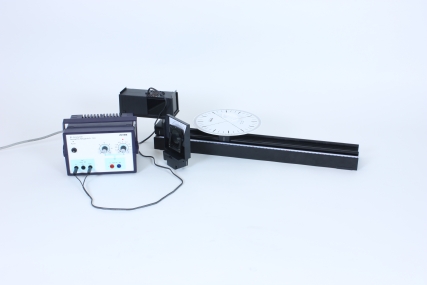Principle
When light is reflected at the boundary surface of two non-absorbing media (e.g., at an air-glass boundary), at a certain angle of incidence α the reflected light is completely plane-polarized. This angle is known as the polarization angle (αp). The sum of αp and the complementary angle of refraction βp is equal to 90 degree, i.e., if α=αp , the reflected and the refracted ray are at right angles to one another (Brewster´s Law). In the course of the experiment the students should verify this law.
Benefits
- Multifunctional light box - All-in-one: Can be used for geometric optics on the table, colour mixing and on an optical bench
- Extension with others sets at anytime, no additional light sources needed, recognition value for students
Tasks
What correlation exists between the angle of incidence and the angle of refraction when the reflected light is completely polarized?
A parallel light beam falls aslant onto a transparent object with a smooth surface. The angle of incidence at which the reflected fraction of the light has undergone maximum polarization is to be ascertained. This angle of incidence, known as polarization angle (αp), and the corresponding refraction angle βp are measured. Afterwards, it is to be investigated which correlations between αp and βp exist.

